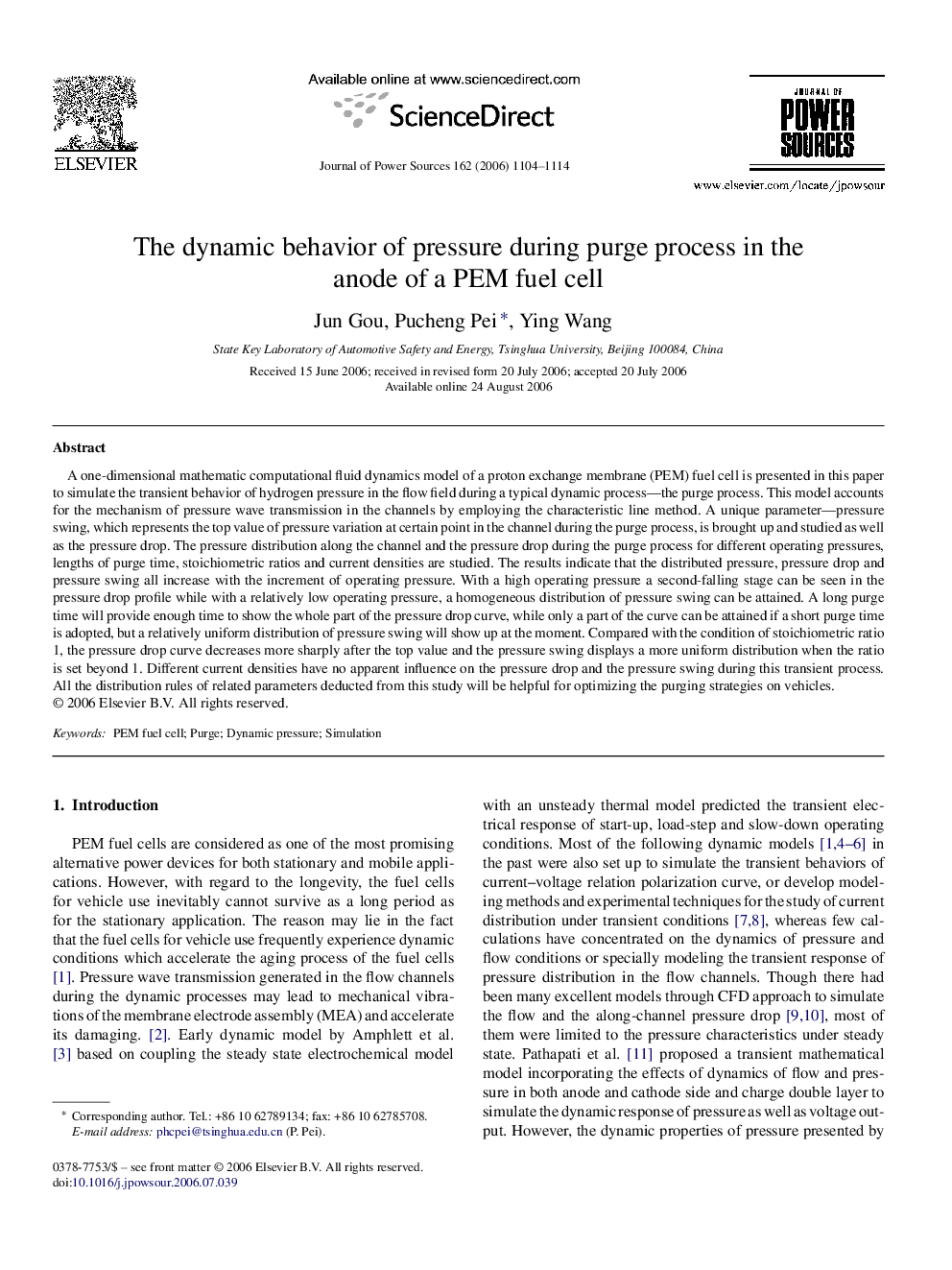| Article ID | Journal | Published Year | Pages | File Type |
|---|---|---|---|---|
| 1292483 | Journal of Power Sources | 2006 | 11 Pages |
A one-dimensional mathematic computational fluid dynamics model of a proton exchange membrane (PEM) fuel cell is presented in this paper to simulate the transient behavior of hydrogen pressure in the flow field during a typical dynamic process—the purge process. This model accounts for the mechanism of pressure wave transmission in the channels by employing the characteristic line method. A unique parameter—pressure swing, which represents the top value of pressure variation at certain point in the channel during the purge process, is brought up and studied as well as the pressure drop. The pressure distribution along the channel and the pressure drop during the purge process for different operating pressures, lengths of purge time, stoichiometric ratios and current densities are studied. The results indicate that the distributed pressure, pressure drop and pressure swing all increase with the increment of operating pressure. With a high operating pressure a second-falling stage can be seen in the pressure drop profile while with a relatively low operating pressure, a homogeneous distribution of pressure swing can be attained. A long purge time will provide enough time to show the whole part of the pressure drop curve, while only a part of the curve can be attained if a short purge time is adopted, but a relatively uniform distribution of pressure swing will show up at the moment. Compared with the condition of stoichiometric ratio 1, the pressure drop curve decreases more sharply after the top value and the pressure swing displays a more uniform distribution when the ratio is set beyond 1. Different current densities have no apparent influence on the pressure drop and the pressure swing during this transient process. All the distribution rules of related parameters deducted from this study will be helpful for optimizing the purging strategies on vehicles.
